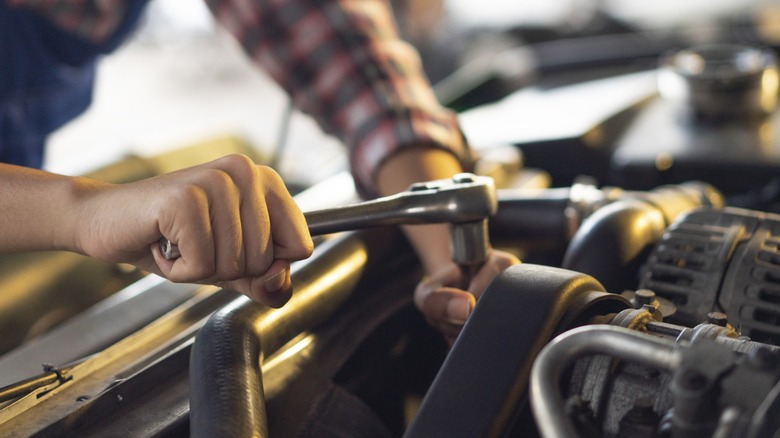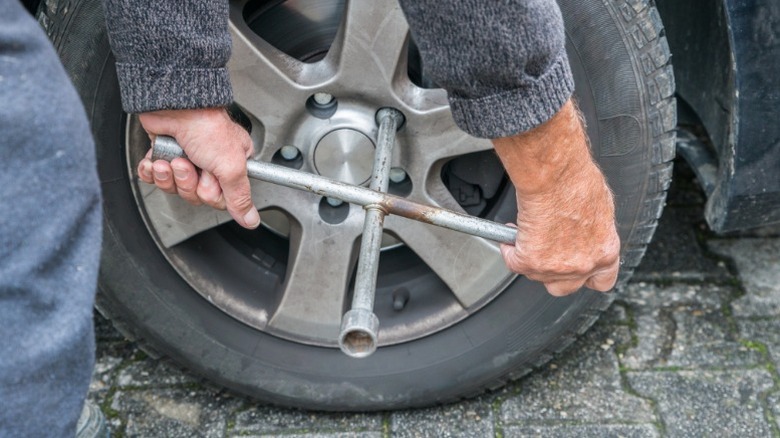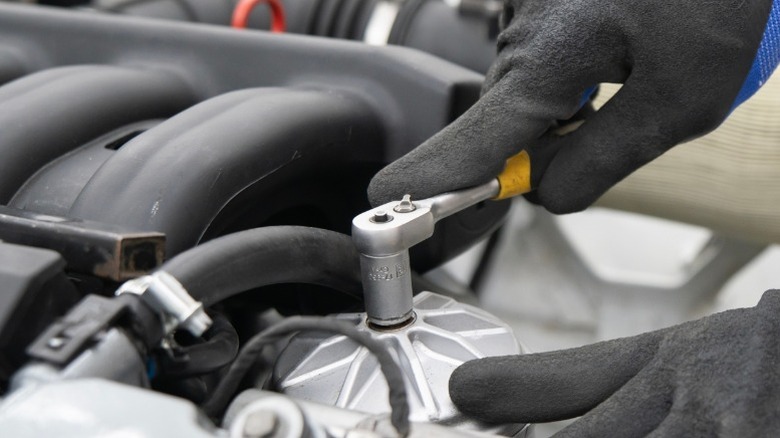What's The Differences Between A Socket Wrench And A Ratchet Hand Tool?
We may receive a commission on purchases made from links.
If you're into tools at all, and even if you're not, you're probably familiar with ratchet and socket wrenches. The two phrases are used interchangeably in virtually all industries and settings. However, you may have heard people say that it's incorrect to use these two terms in this way.
Those people are technically correct. In reality, a ratchet and a socket wrench are two separate tools. They're both designed to help us remove fasteners, like nuts and bolts, by relying on a long handle to apply leverage to the fastener and break it free. There is, however, a pretty big difference between the two tools: namely, the gears inside the ratchet's head, allowing users to crank the tool back and forth, instead of spinning it all the way around. That makes a big difference when working in tight spaces, but it's also extremely handy for any job, even one with lots of open space surrounding the fastener.
Despite these differences, it's perfectly okay to use the two terms interchangeably — if you're talking about a ratchet, that is. The vast majority of professionals working in the trades and even DIYers use the phrases this way, and it's unlikely that anyone will be confused if you use one term or the other.
What is a socket wrench?
A traditional socket wrench does not contain ratcheting gears; instead, the term refers to a tool with a handle and either a square drive, allowing you to connect various sockets, or a permanently attached socket on the other end. The four-way lug nut wrenches that many people keep in their cars for emergency tire work are a good example of this type of wrench. However, you can also find socket wrenches that look extremely similar to ratchets, only without the ability to crank the tool back and forth.
These devices can come in various styles. They can be a simple handle with a socket welded or otherwise attached to the other end, or they can have sockets on both ends. These double-sided socket wrenches frequently feature pins or hinges where the sockets attach to the bar or handle, allowing them to move roughly 90 degrees in either direction. You can also find socket wrenches with a 90-degree bend built into the handle on one end, either in front of a square drive or a permanently-attached socket, and a straight socket or handle on the other end. Basically, a socket wrench is any type of tool with either the ability to attach a socket, like an integrated square drive, or a built-in socket, without a ratcheting capacity.
We mentioned that socket and ratchet can be used interchangeably if you're referring to a ratchet. Traditional socket wrenches are not used very frequently in modern professional settings or even for most DIY projects. They're used mostly for emergency services, like replacing a flat tire. You shouldn't refer to one of these old-school socket wrenches as a ratchet, simply because it lacks the ratcheting gear head that modern ratchets contain.
What is a ratchet?
In comparison to a traditional socket wrench, a ratchet or ratchet wrench (not to be confused with a ratcheting combination wrench) features a ratcheting gear head, which allows the user to crank the tool back and forth instead of spinning it around in a circle. Depending on the number of gear teeth that the ratchet has, the turning arc required to engage the tool can be smaller or larger. For example, some of the most common types of ratchets contain 72-teeth gears. These devices provide a 5-degree arc swing, meaning you don't have to rotate the tool very far in order to move the fastener. There are other ratchet gears with more or fewer teeth, and they provide differing swing arcs. You can also find gearless ratchets that enable arc swings of less than 1 degree. In comparison to standard ratchets, gearless ratchets rely on steel roller bearings and are ideal for working in extremely tight spaces.
Ratchets can come in different shapes and sizes, and they usually feature a switch allowing you to change between loosening and tightening. The most common square drive sizes for ratchets are ¼-inch, ⅜-inch, and ½-inch, and most ratchet and socket sets contain devices in each of those three sizes. That said, larger sizes do exist and are commonly used when working on heavy-duty machinery, like commercial diesel trucks and industrial equipment.
As mentioned, you can call a ratchet a socket wrench, since both devices use sockets and traditional socket wrenches are rarely used today. However, remember that there are differences between these two devices, and you shouldn't call the old-fashioned socket wrenches ratchets.


